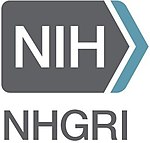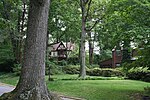Oakmont, Maryland
1918 establishments in MarylandMontgomery County, Maryland geography stubsPopulated places established in 1918Villages in MarylandVillages in Montgomery County, Maryland

Oakmont is a village and special taxing district in Montgomery County, Maryland, United States. Chartered in 1918, the village includes both sides of Oak Place and the south side of Oakmont Avenue, across Old Georgetown Road from the National Institutes of Health, in the Bethesda postal area. The village has approximately 145 inhabitants in 52 homes.
Excerpt from the Wikipedia article Oakmont, Maryland (License: CC BY-SA 3.0, Authors, Images).Oakmont, Maryland
Daley Lane,
Geographical coordinates (GPS) Address Nearby Places Show on map
Geographical coordinates (GPS)
| Latitude | Longitude |
|---|---|
| N 39.003611111111 ° | E -77.113055555556 ° |
Address
Daley Lane
Daley Lane
20891
Maryland, United States
Open on Google Maps







